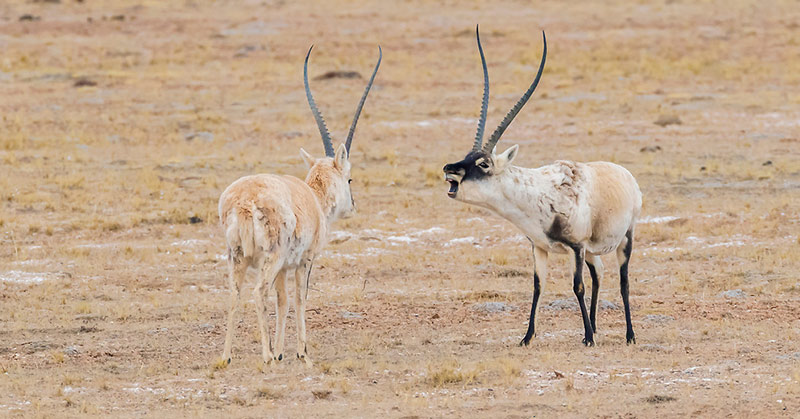There are countless examples of opulence and luxury demand doing significant harm to the natural world, but few are more absurd and heartbreaking than the poaching of Tibet’s rare antelopes for scarves.
Tibetan antelopes considered near threatened and are being quickly wiped out due to the demand for a $20,000 luxury scarf called a shahtoosh shawl. The scarf is made from the hair of the Tibetan antelope. The antelope’s hair is short and warm, making it ideal for products like scarves.
But the process is incredibly wasteful and is threatening the species with extinction – in order to make just one scarf, 4 antelopes must be killed. According to CITES (Convention on International Trade in Endangered Species of Wild Fauna and Flora), the Tibetan Antelope (Pantholops hodgsonii) is listed as Appendix I, barring international trade of its parts and its derivatives.
Read more: Trophy Hunter Seeks to Import Parts of Rare Rhino He Paid $400,000 to Kill
Rare antelope scarves
Unlike many animals that are raised for their hair or pelt, the Tibetan antelope is not domesticated and cannot be shorn like a sheep. The antelope can only be hunted in the wild, which puts additional pressure on a species that is already teetering on the brink of extinction. Once killed, the wool is stripped from their bodies.
Demand for these scarves originated in India, where the shatoosh shawl is a highly valued dowry item, but the demand has spread to the west. In Switzerland, where the scarves are banned, customs officials say they’ve seized roughly the equivalent of 800 Tibetan antelopes worth of scarves from people entering the country.
Read more: Trophy Hunter Eaten By Crocodiles While Hunting for Rhinos
Despite bans and concerns about the well-being of the species, the market is booming for shahtoosh, and poachers are cashing in big time. Trophy hunters are paid huge sums of money to kill the animals. From there, the hair is smuggled into India’s Kashmir province where it is woven into $20,000 scarves.
An animal in decline
The decline of the Tibetan antelope is difficult to measure. It is estimated that, in their prime, more than 1 million roamed their territory in central Asia. Today, it’s estimated that 250,000 remain – a 75% decline in population. Other estimates place their populations at 100,000 or fewer. The primary cause of the decline is poaching for shahtoosh.
China has stepped in to help protect the species from complete eradication. Like CITES, China’s Ministry of Environmental Protection considers the antelopes “near threatened.” They have expanded the Changtang National Nature Reserve to protect an area where the antelopes give birth to their calves.
Keep Reading: Expert Warns Trophy Hunting Could Push Polar Bears To Extinction

